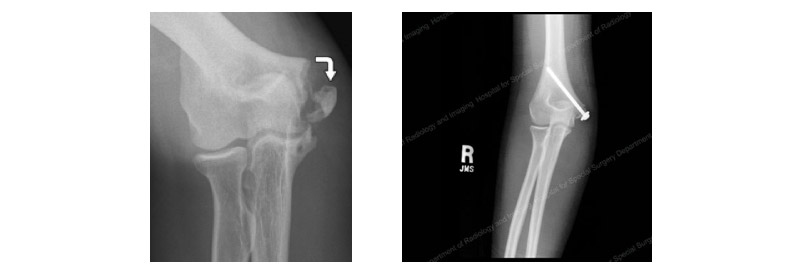Overuse baseball injuries and how to identify and prevent them
Who wants to be the best? I would venture to say most people want to be the best. Now, how many of us actually work hard enough to be the best? Maybe that’s a smaller number.
I think the pressure to be the best is especially felt in team sports. Specifically here, we’re looking at baseball pitchers.
Practice makes perfect, right? So why not just keep throwing pitches until you can’t throw another one? That’s good right? Practice makes perfect after all.
Well, practicing throwing isn’t like Bart Simpson writing on the chalkboard. You can’t keep it up indefinitely without causing harm to your body.
The Problem: Injuries in young throwing athletes are on the rise, and elbow and shoulder injuries are the most common.
[quote]Let’s not put so much pressure on them to win that they end up hurting themselves.[/quote]
Thousands of children are seen each year complaining of elbow or shoulder pain, due in large part to damage or tearing to the ulnar collateral ligament (UCL) or growth plates in the elbow and shoulder.
When any of these structures become damaged, it can take weeks or months to rehabilitate, and the worst cases will require surgery.
So not only does throwing too much injure kids and keep them from competing in the here and now, but it can jeopardize their chances of attending showcases, and it can inhibit their overall performance if they are trying to play through the injury.
 But do you want to know the good news? Elbow and shoulder injuries can be easily prevented.
But do you want to know the good news? Elbow and shoulder injuries can be easily prevented.
Here are some easy steps to follow:
- Warm up properly by running, stretching, and easing into throwing
- Rotate playing other positions besides pitcher
- Concentrate on age-appropriate pitch counts
- If an athlete feels any pain while pitching, have them stop. If the pain persists, have them see a medical professional.
- Don’t pitch on consecutive days
- An athlete should communicate regularly about how their arm is feeling and if there is pain
- Develop skills that are age appropriate, for example, no off-speed (breaking type) pitches
- Emphasis on control, accuracy and good mechanics
- Master the fastball first and the change-up second, before considering breaking pitches
- Speak with a sports medicine professional (doctor, athletic trainer or sports enhancement specialist) if you have any concerns about baseball injuries or baseball injury prevention strategies.
Through proper injury prevention and sports enhancement training, the risk of getting an overuse injury decreases. Not only do you get injury prevention benefits through proper training, but your skills and deficits start to improve and your overall performance will be enhanced.
Athletes will notice an increase in control, velocity and strength, and the amount of time it takes to recover will also decrease.
And here’s some data to help you know what’s appropriate for different athletes.
Source: From work by James R. Andrews, MD, and Glenn S. Fleisig, PhD
| AGE | PITCHES/GAME |
| 7-8 | 50 |
| 9-10 | 75 |
| 11-12 | 85 |
| 13-16 | 95 |
| 17-18 | 105 |
| AGES 14 AND UNDER | AGES 15-18 | REQUIRED # OF REST DAYS AFTER PITCHING |
| 66+ | 76+ | 4 calendar days |
| 51-65 | 61-75 | 3 calendar days |
| 36-50 | 46-60 | 2 calendar days |
| 21-35 | 31-45 | 1 calendar day |
| 1-20 | 1-30 | None |
| PITCH | AGE |
| Fastball | 8(+-2) |
| Slider | 16(+-2) |
| Change-up | 10(+-3) |
| Forkball | 16(+-2) |
| Curveball | 14(+-2) |
| Knuckleball | 15(+-3) |
| Screwball | 17(+-2) |
So let’s back off of our pitchers. Let’s not put so much pressure on them to win that they end up hurting themselves. Let’s let them be kids and enjoy sports, but at the same time, let’s help them be competitive in the right way, the safe way.
(image via)

